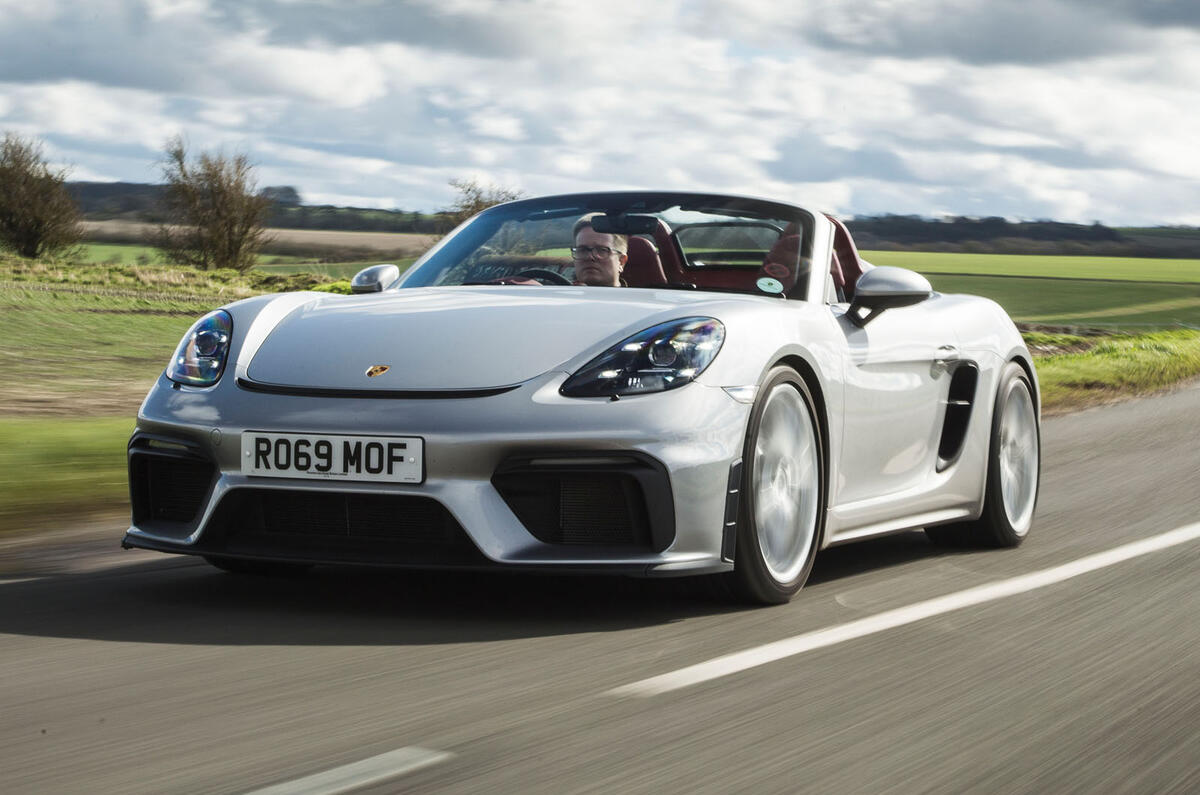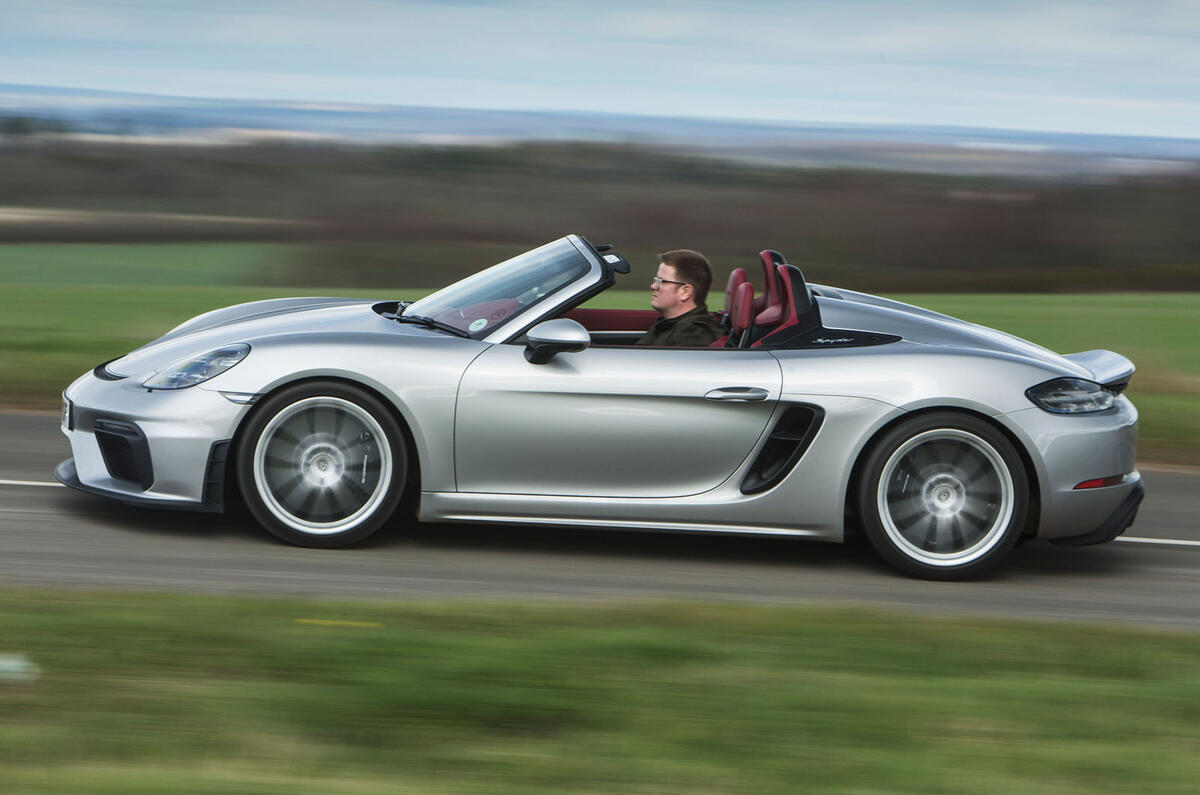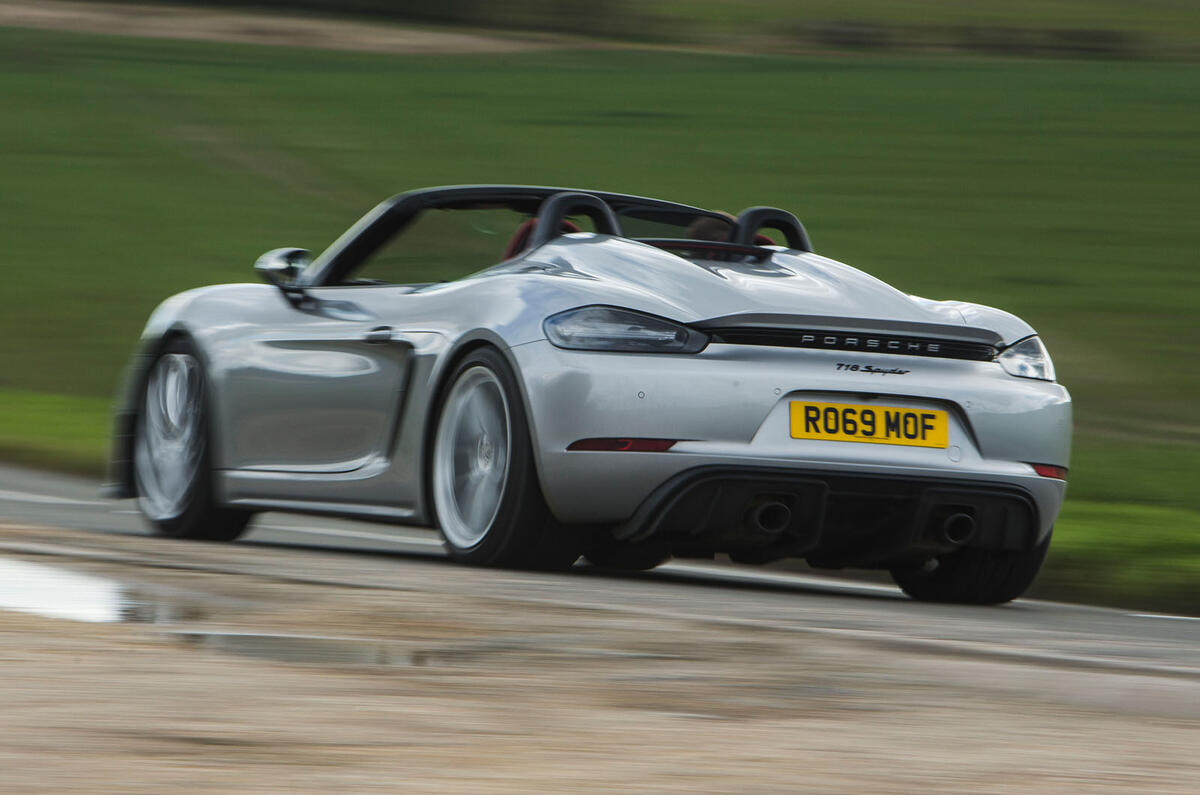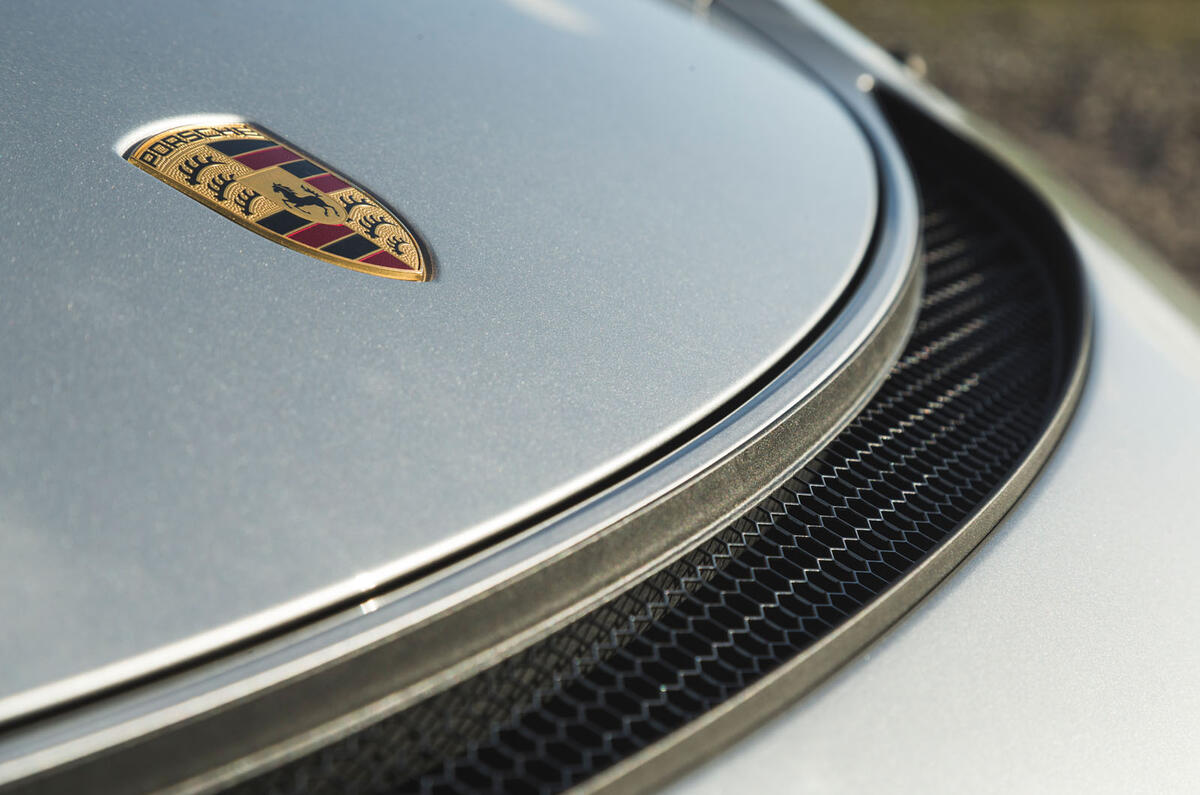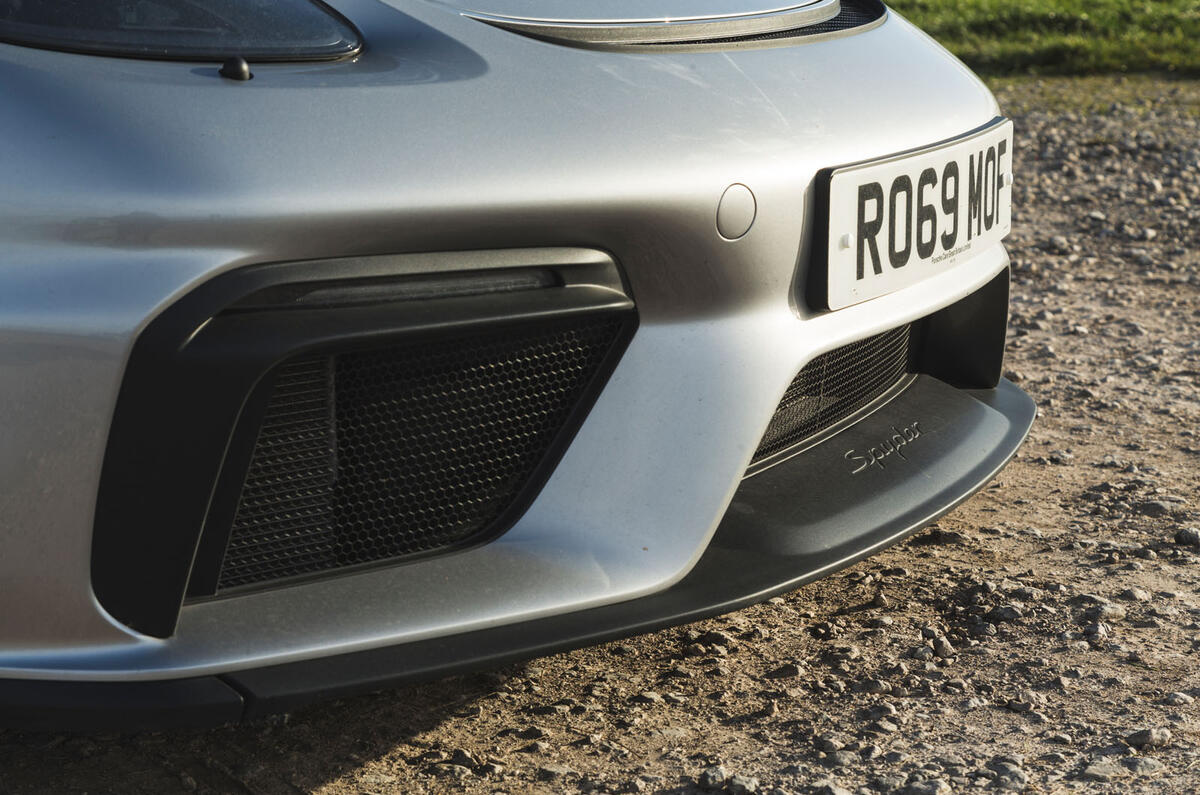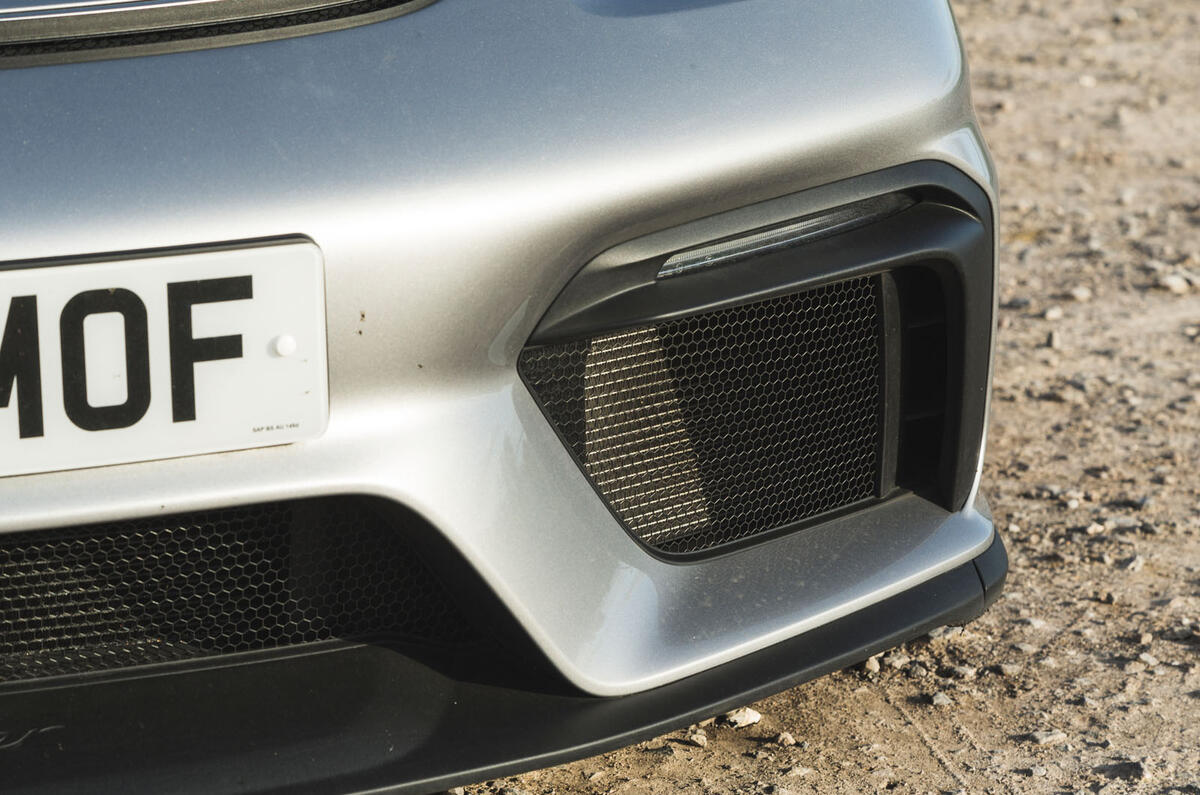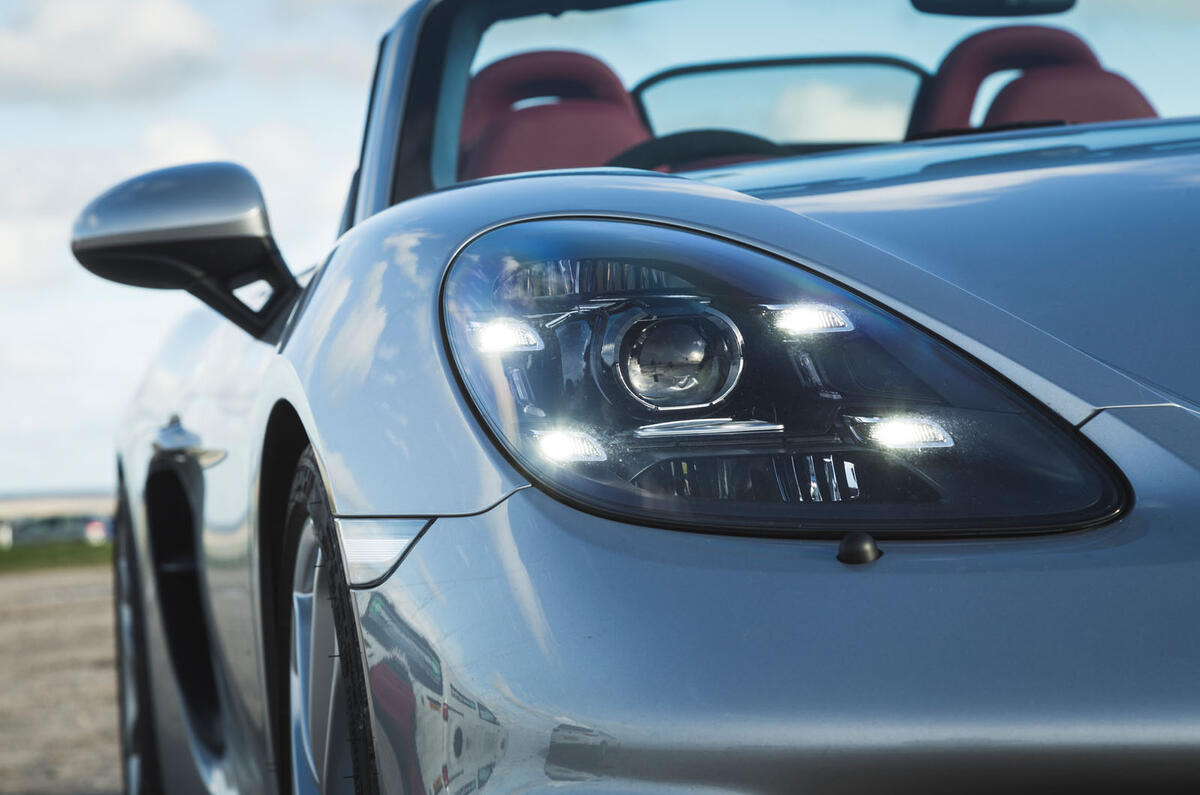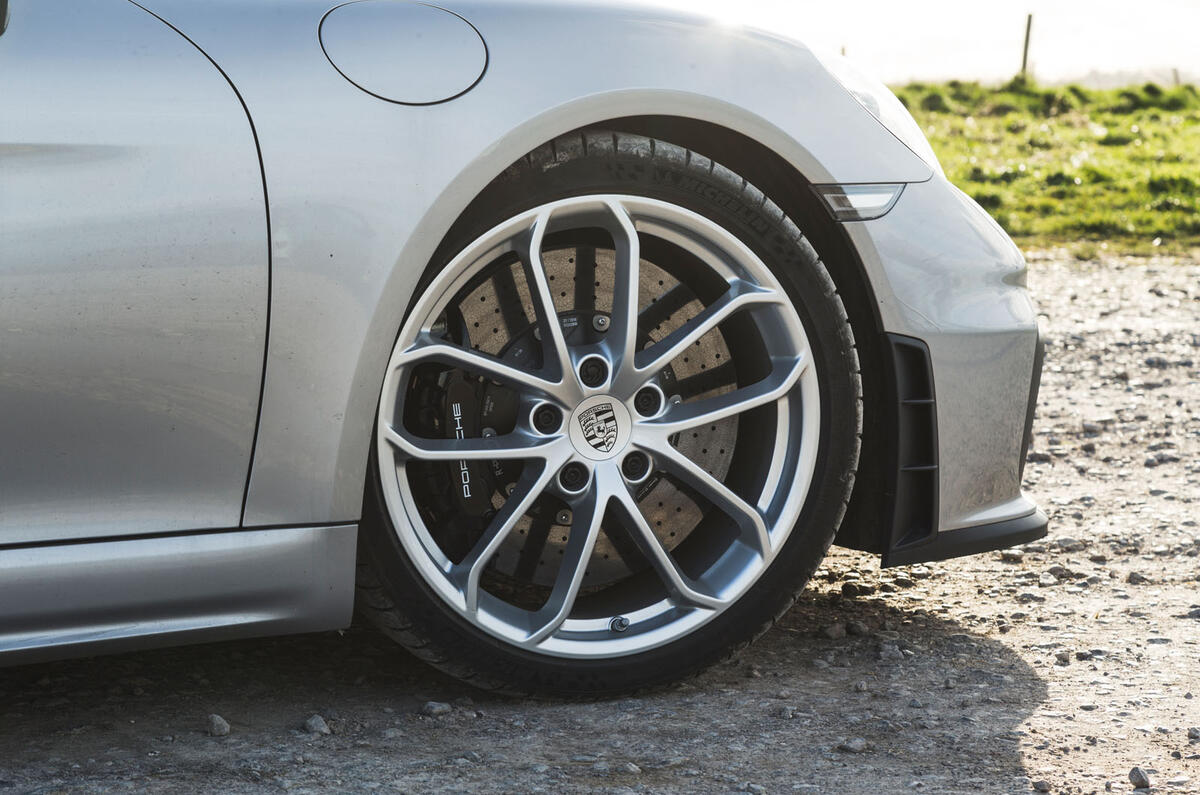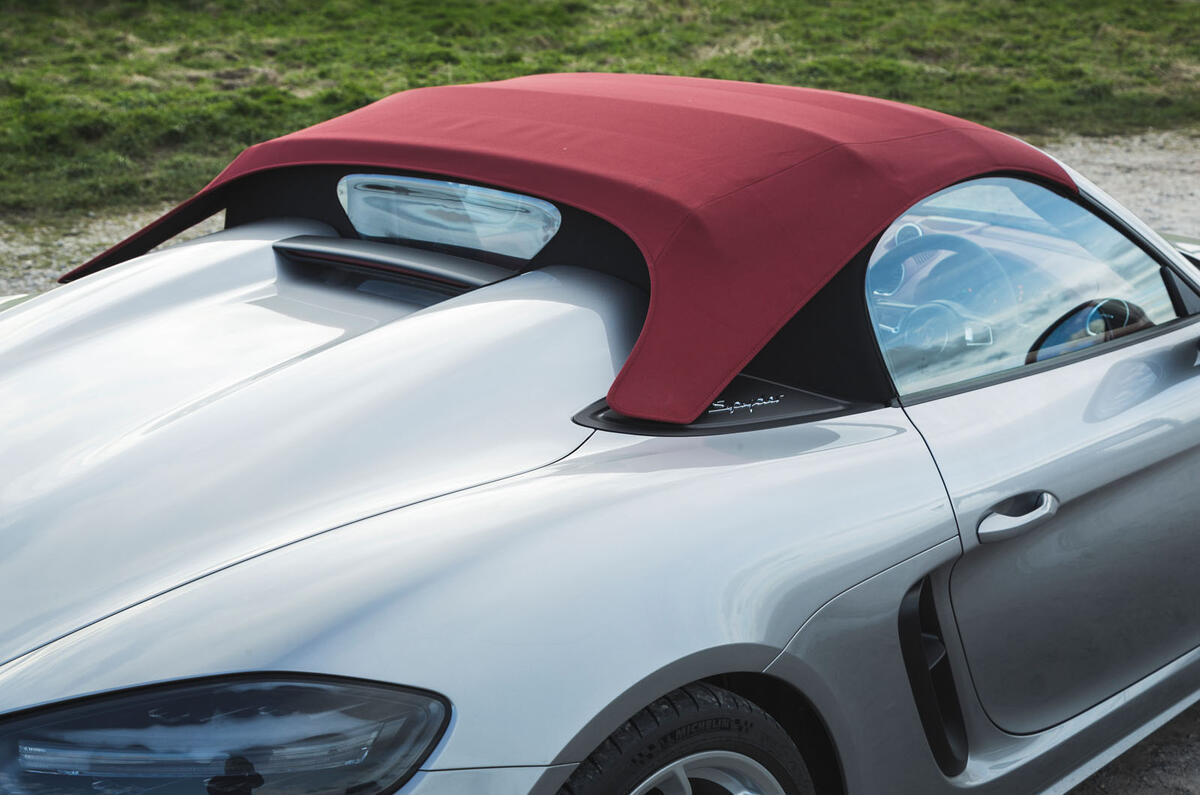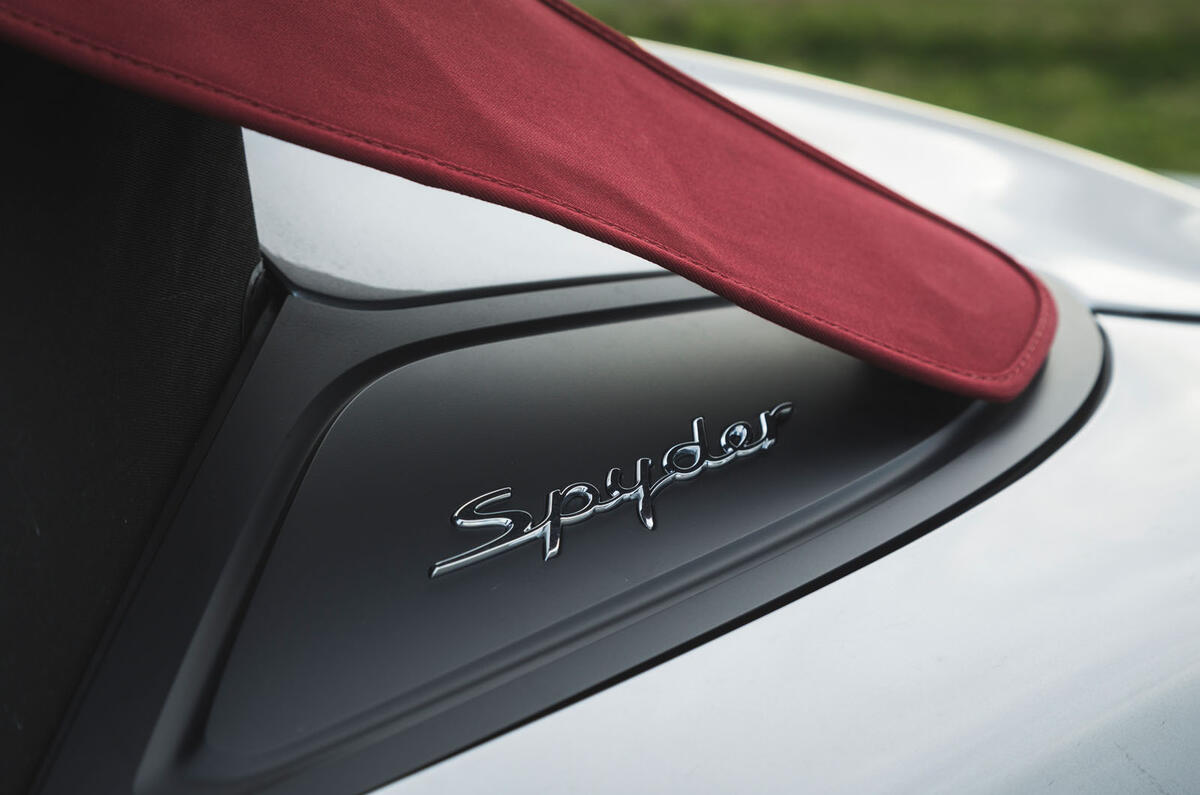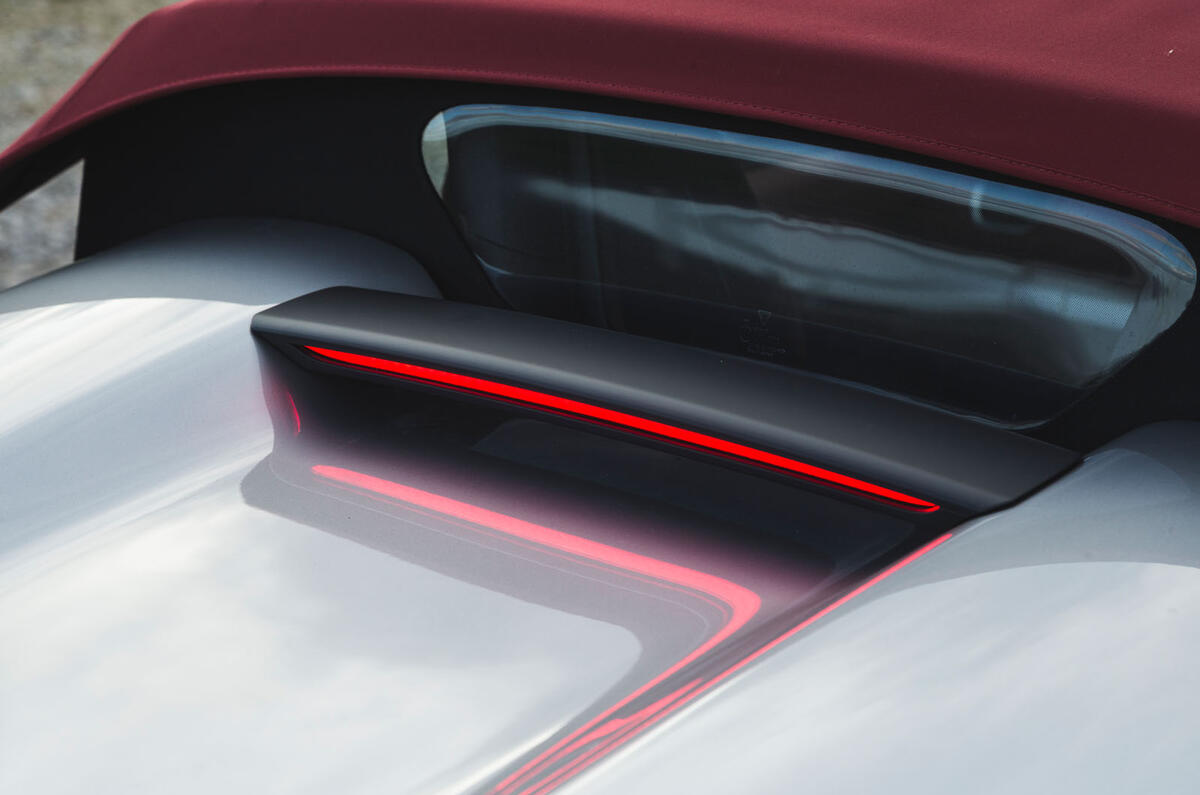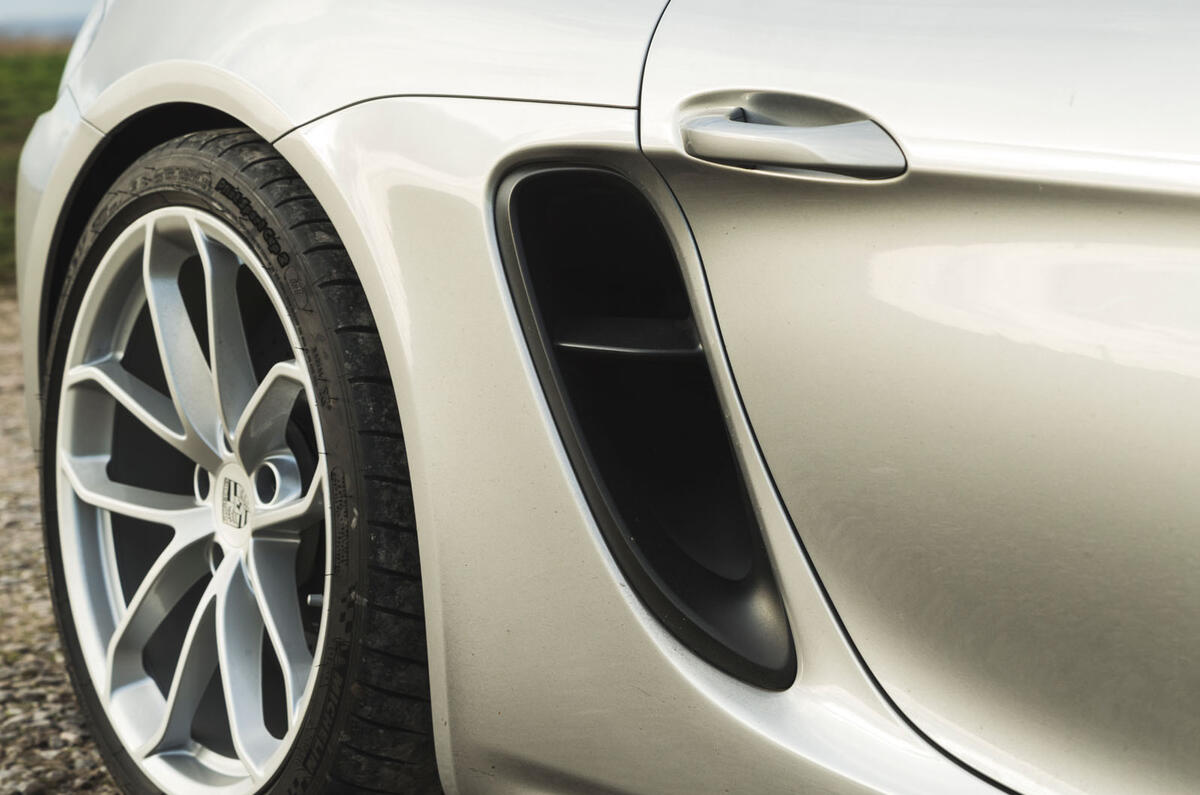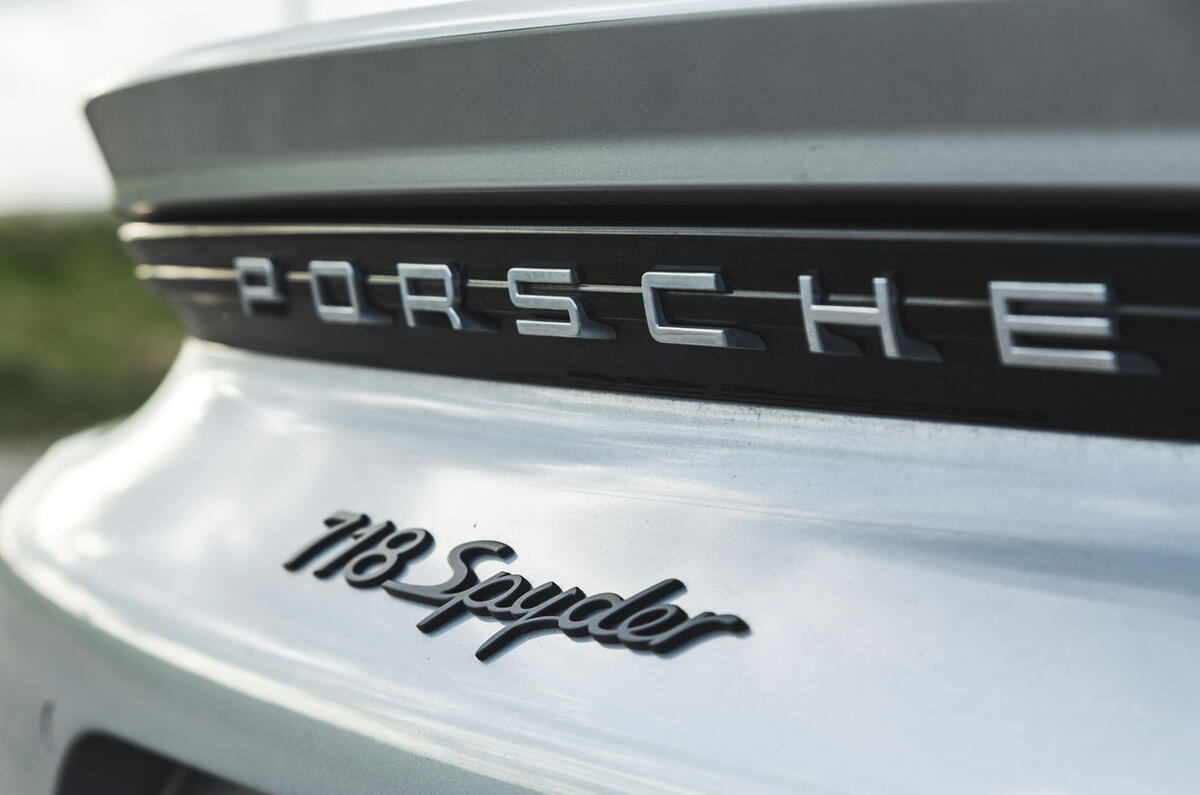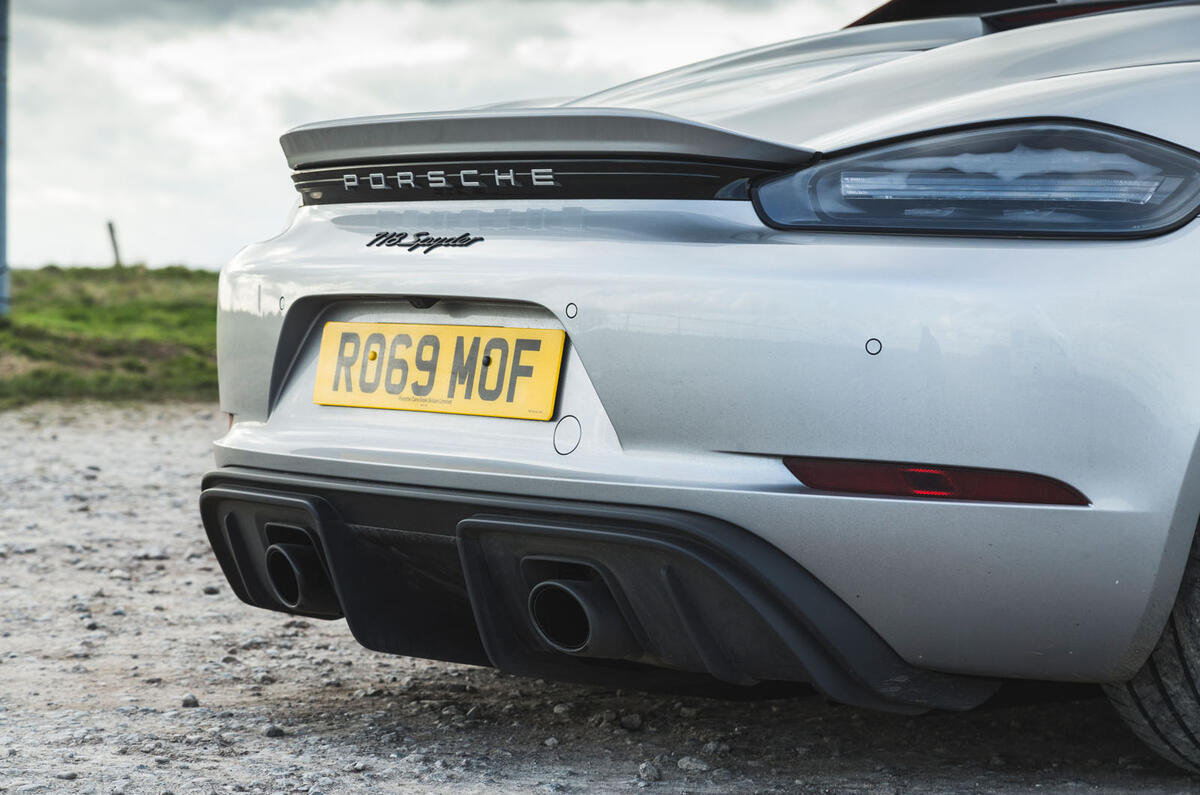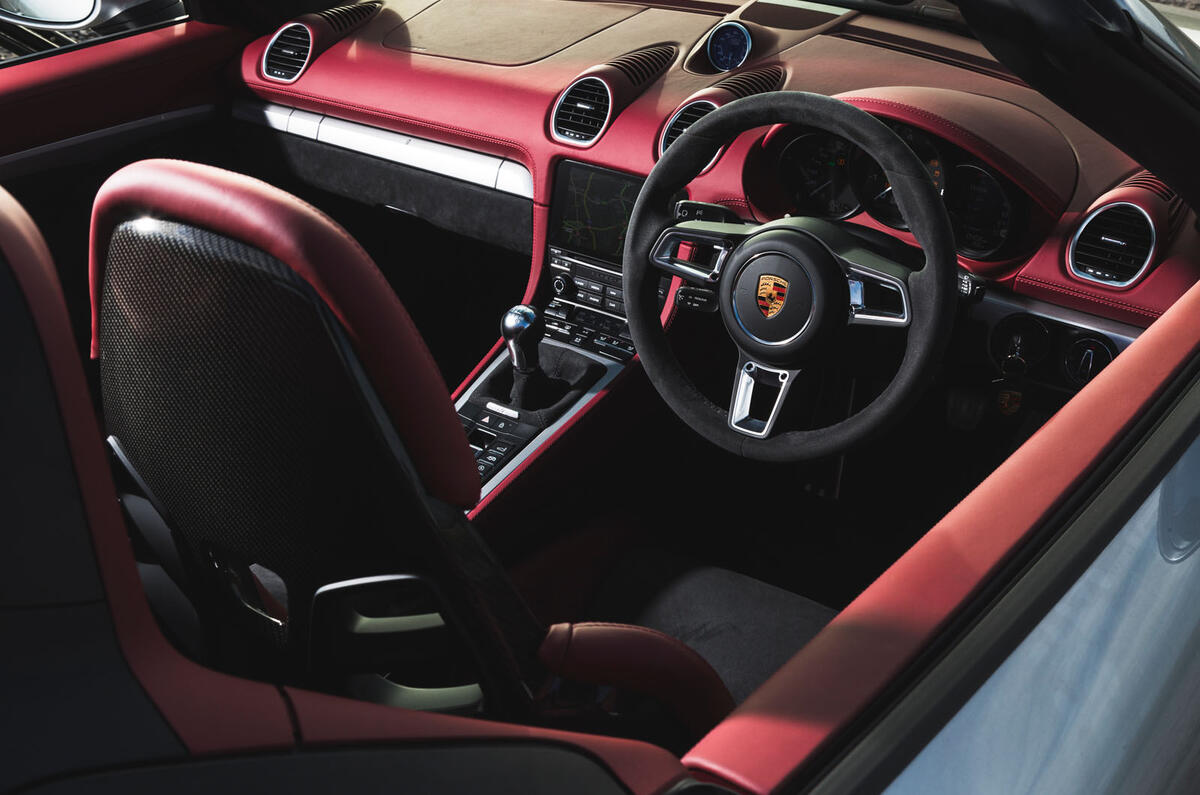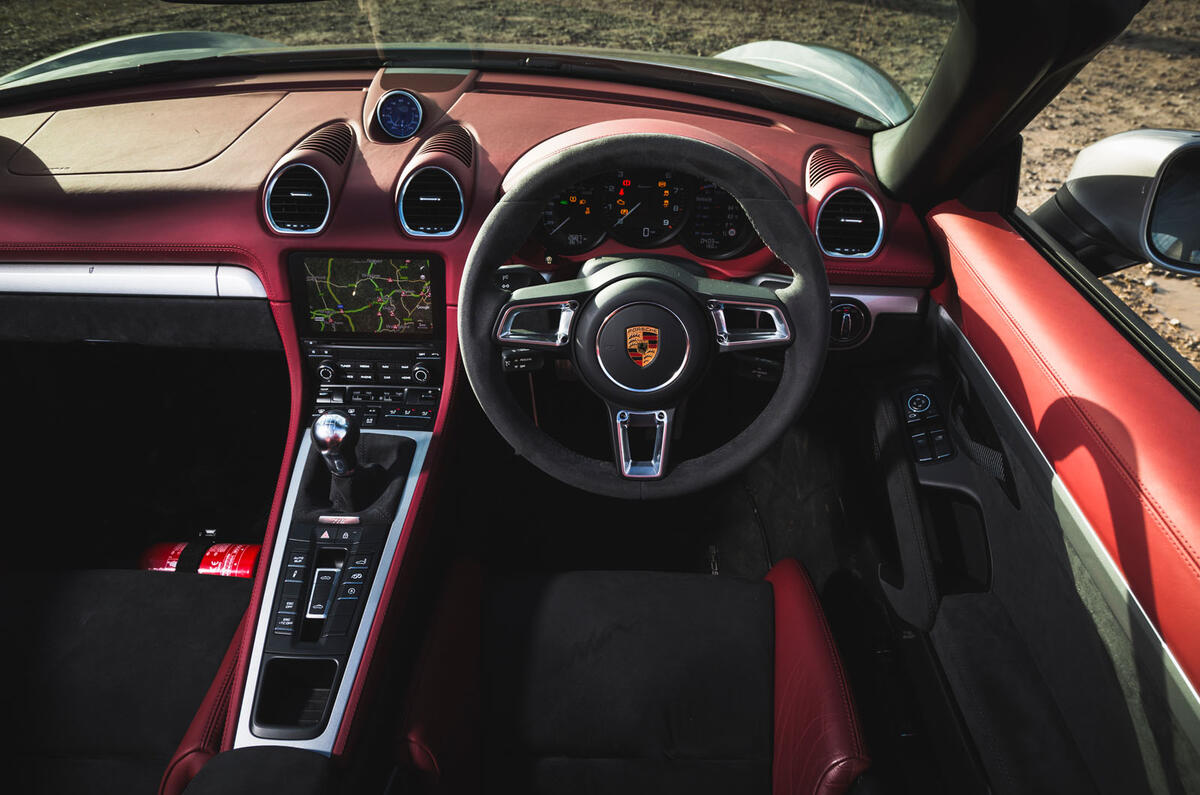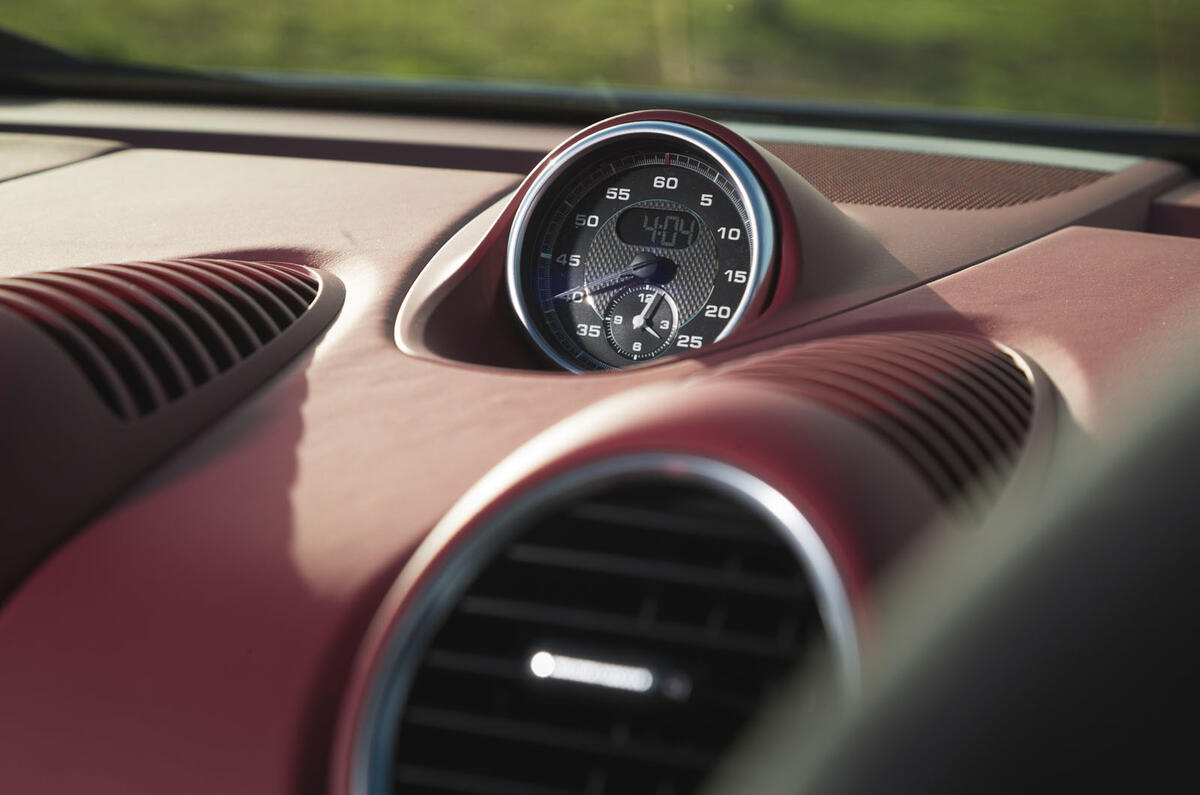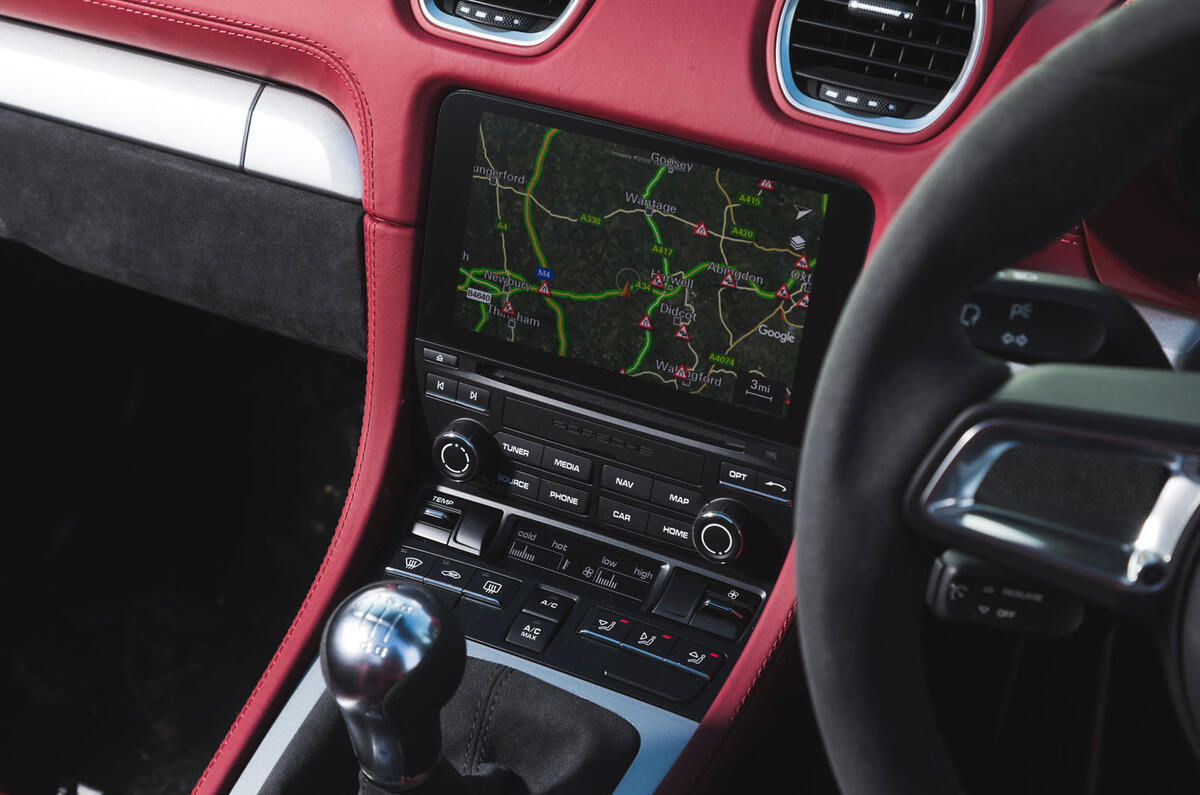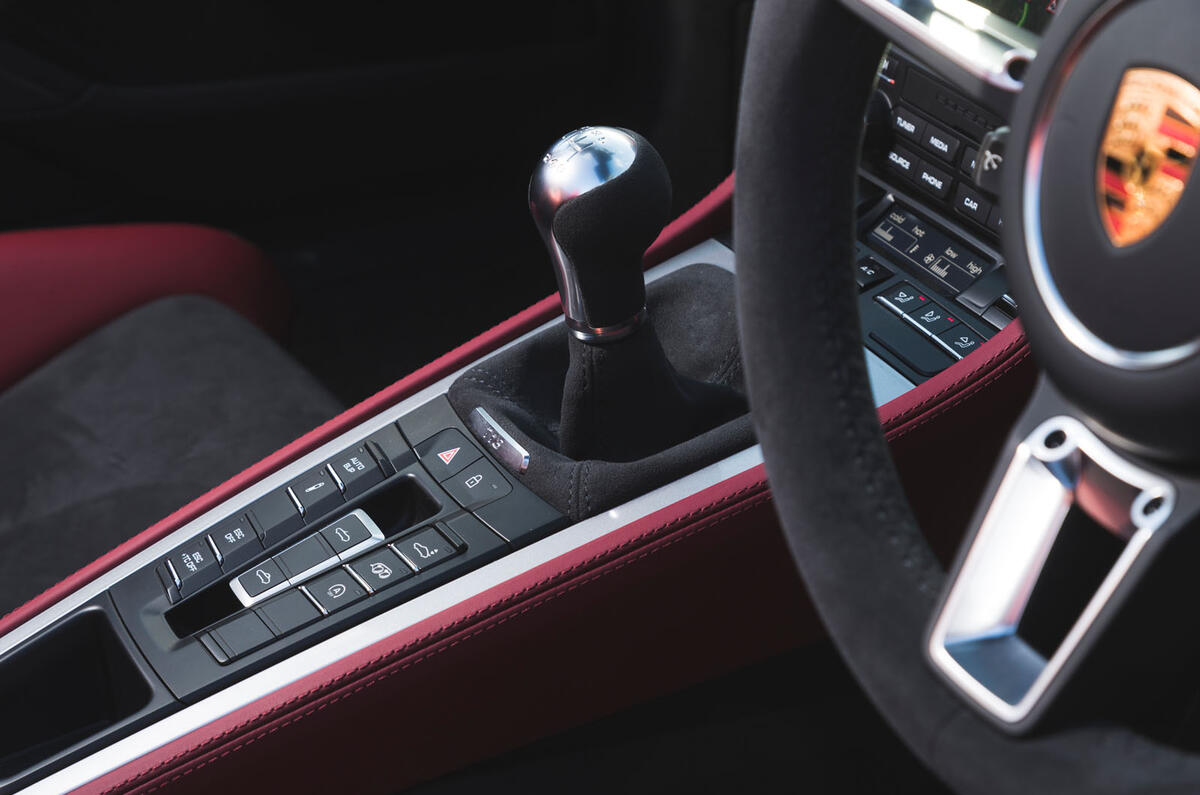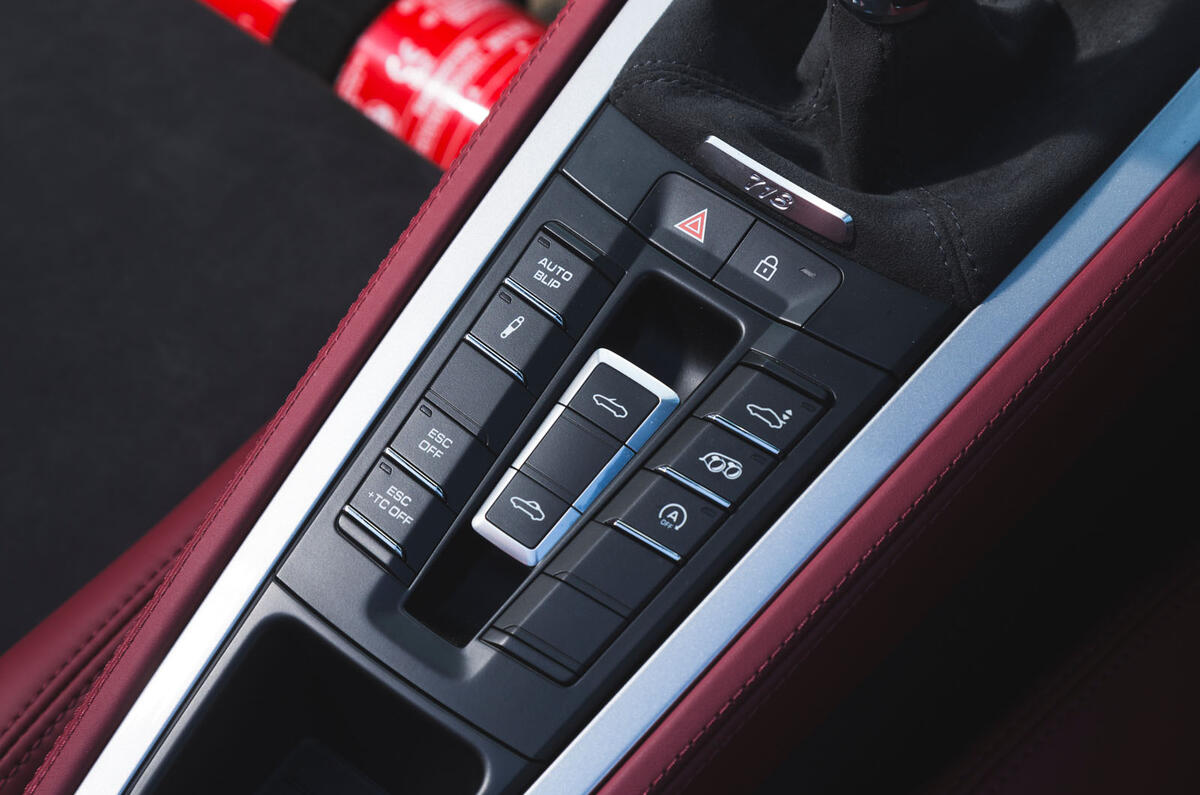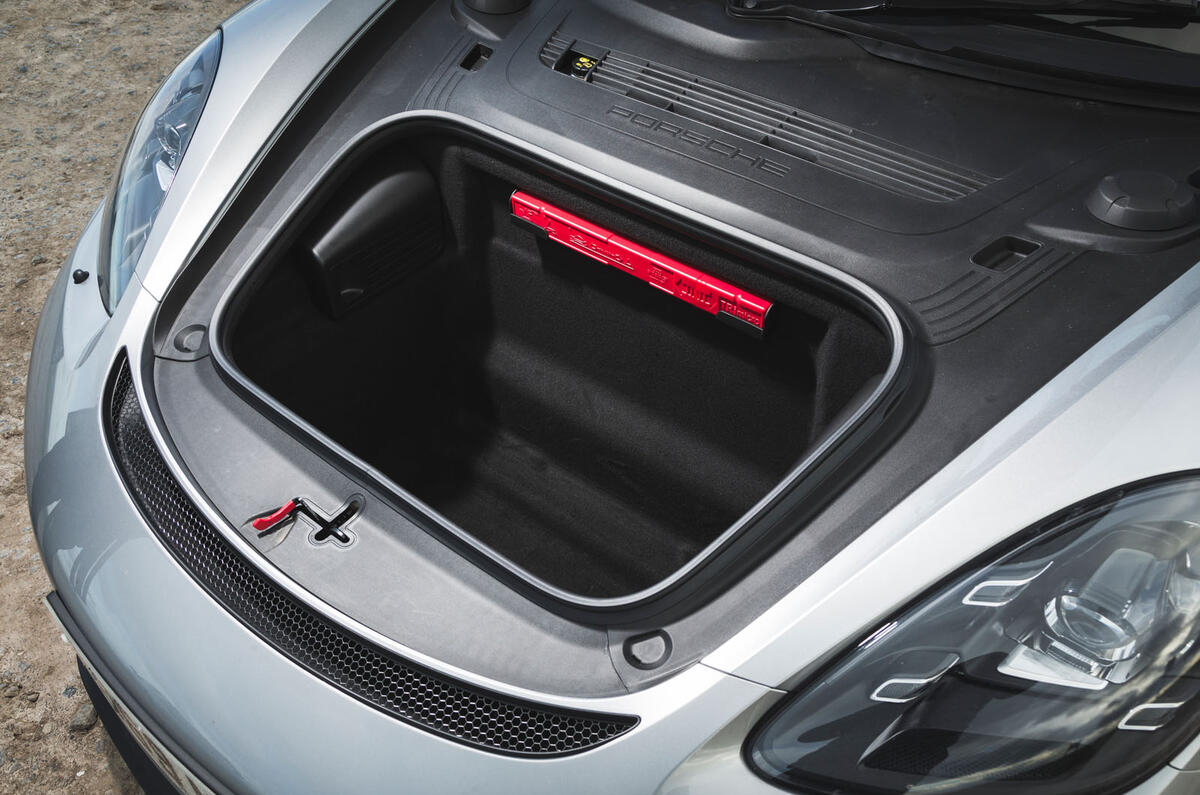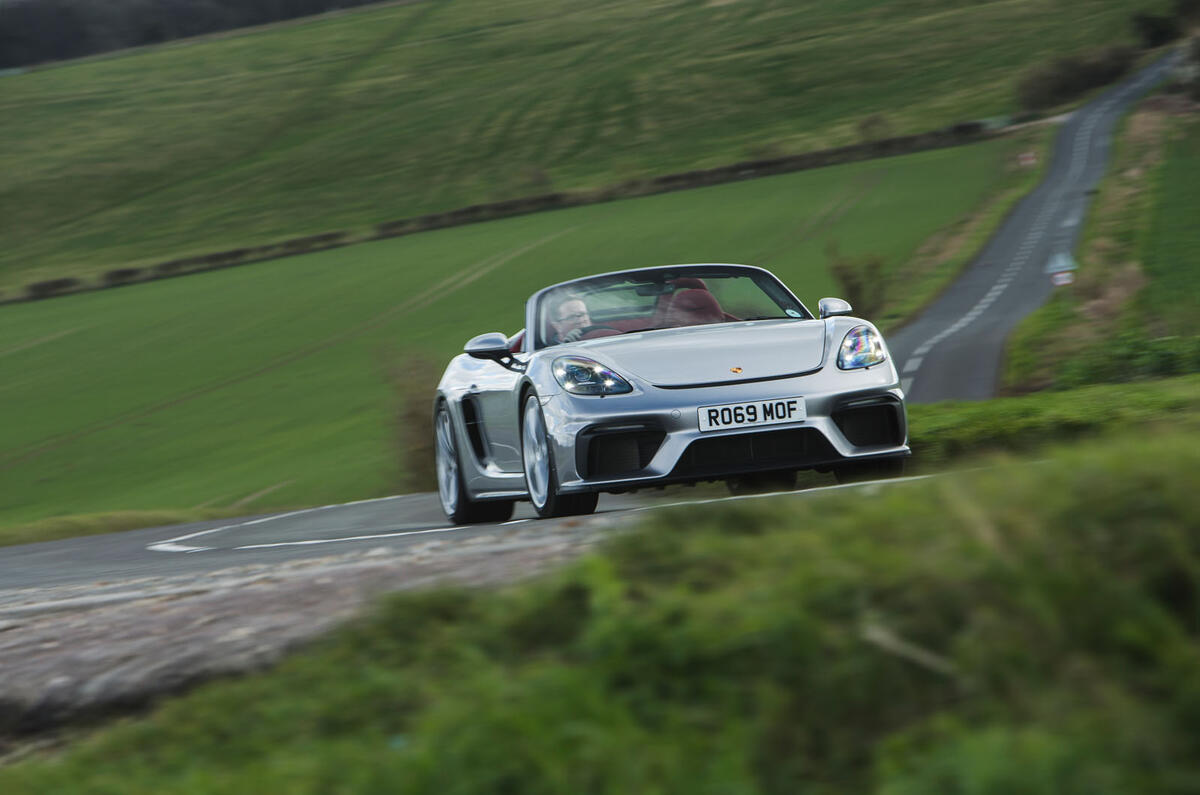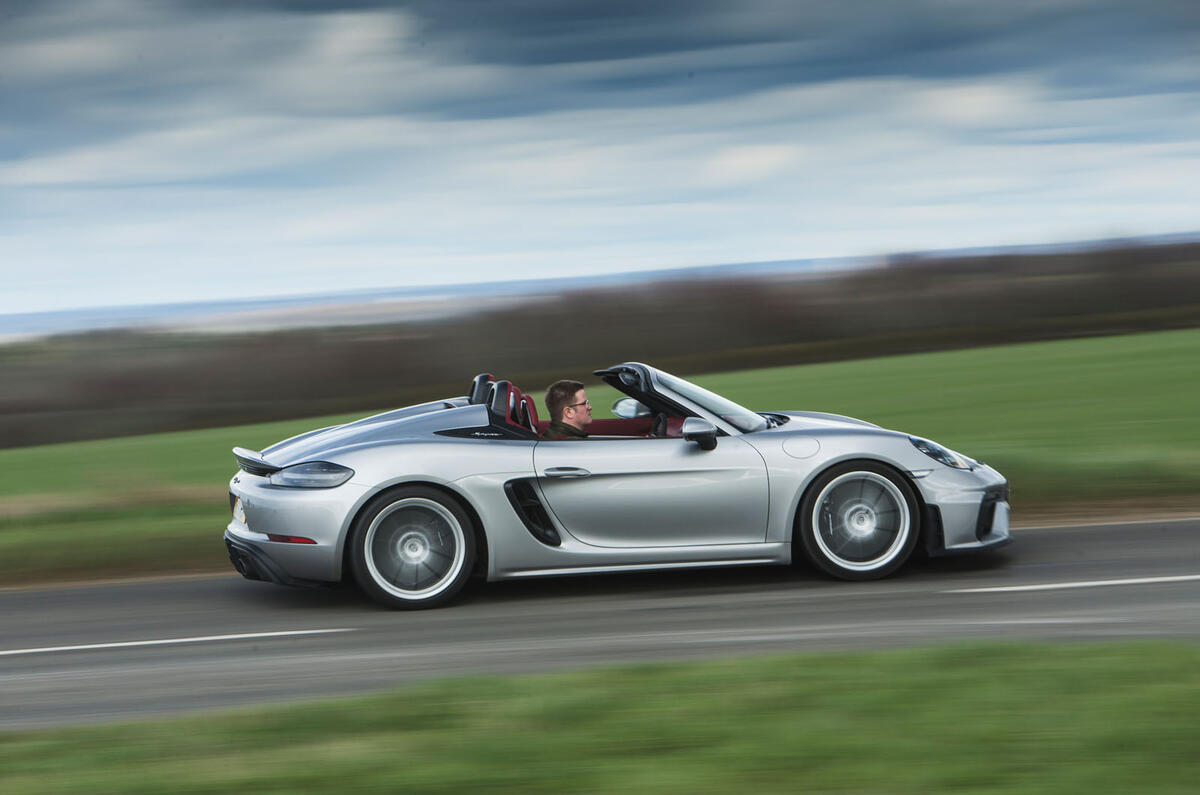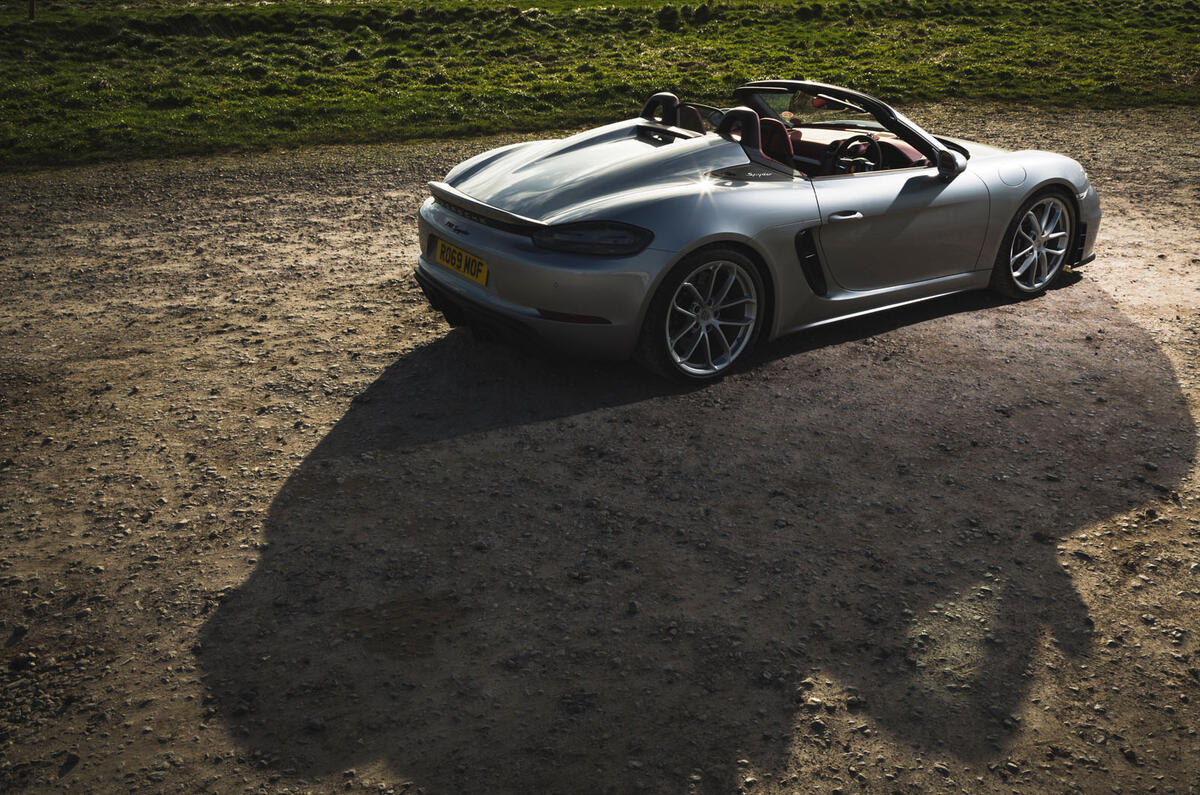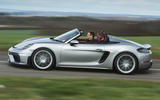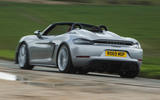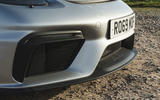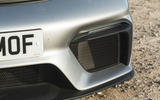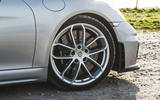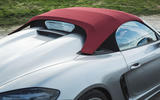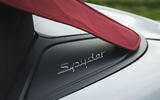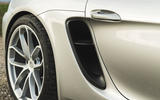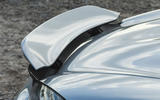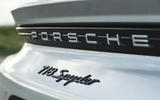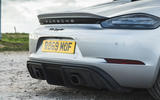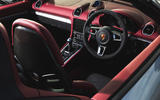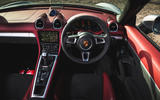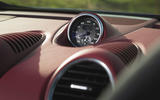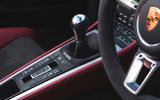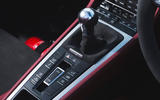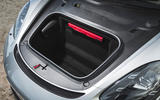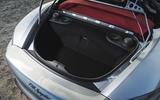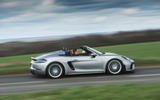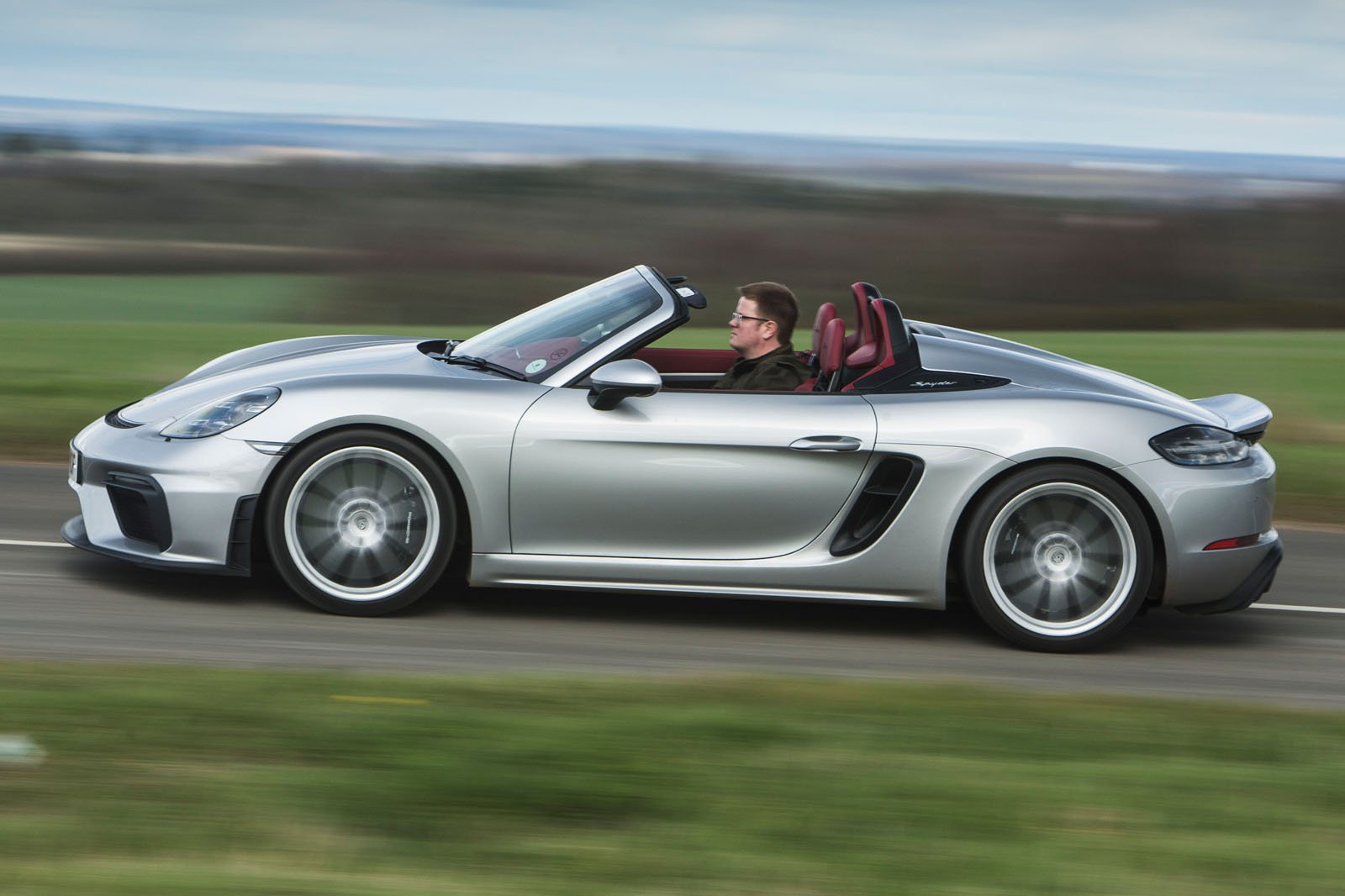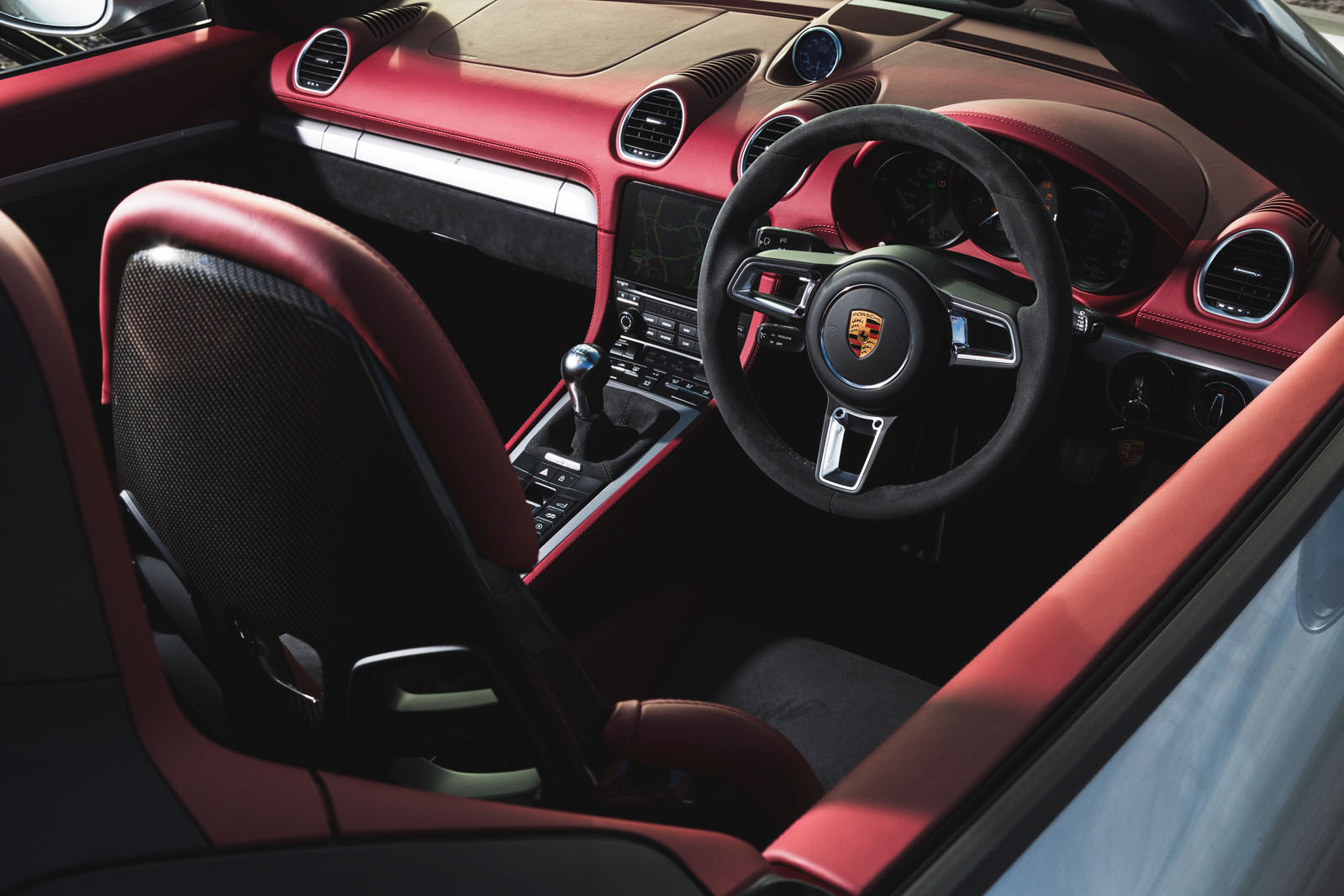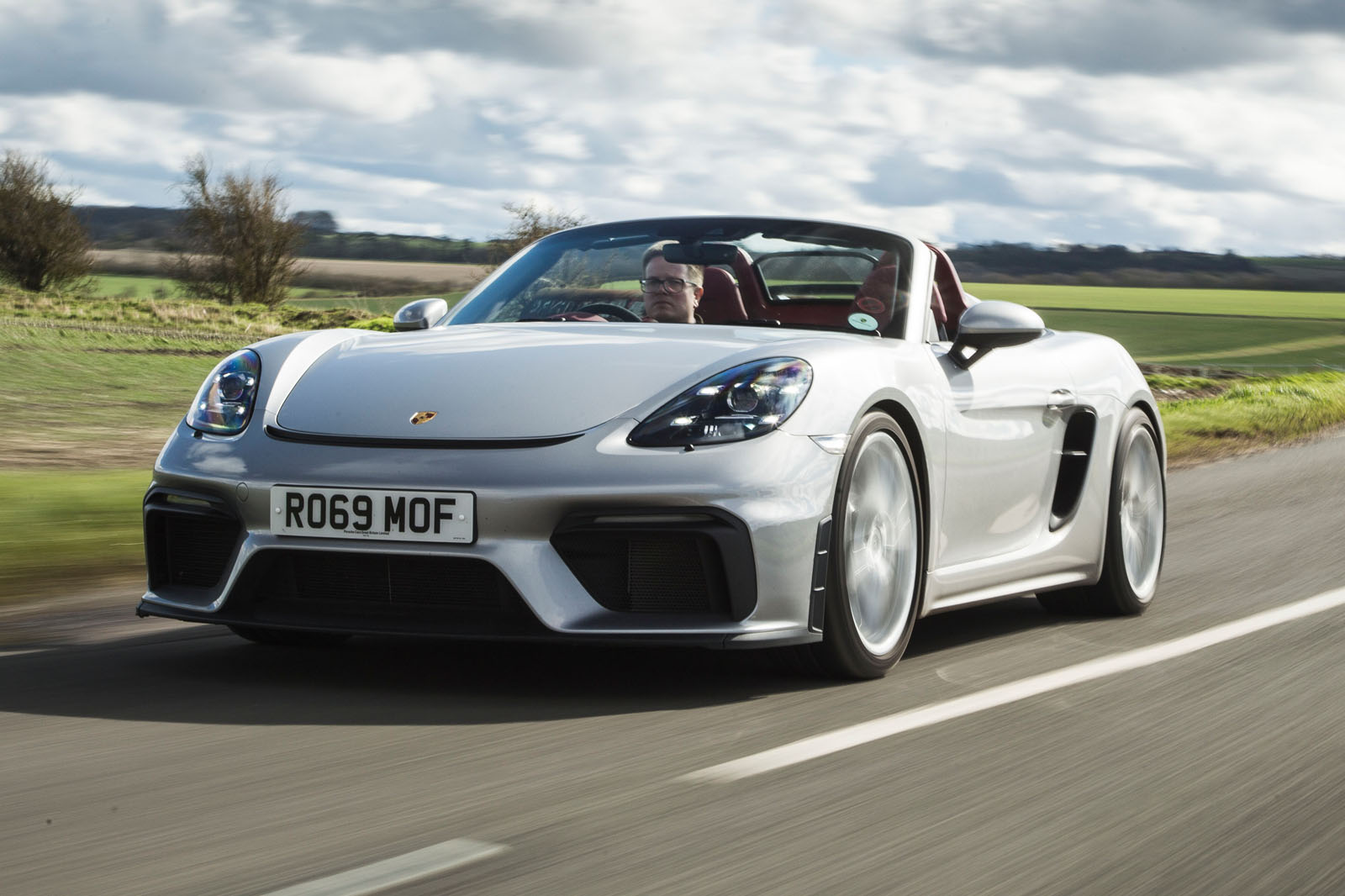Although the 718 Spyder’s cabin doesn’t feel quite as affected by the ageing process as some models in the Porsche stable (looking at you, Porsche Macan), it’s showing its years in 2020. Compared with the swish, minimalist interior of the new 992-generation Porsche 911, the 718 Spyder’s architecture looks rather middle-aged.
An abundance of buttons on the centre console and central dashboard fascia are big giveaways here, as is the fact that the graphics for the infotainment display don’t look quite as sharp as they used to.
Not that you’ll spend much time grumbling. In truth, the sense of occasion that comes from dropping yourself down into the Spyder’s snug, enveloping cabin remains as intact as ever. As is the Porsche way, material quality is excellent, with swathes of leather, Alcantara and polished metal-effect panelling dominating the majority of the Spyder’s interior surfaces. Plastics are generally sparse but are of a very high, solid quality in the places they are used.
The driving position is bang on, too. The delightfully uncluttered GT sports steering wheel can be adjusted to sit close to your chest, its thin, Alcantara-clad rim bristling with motorsport-derived intent. A minor rotation of your left elbow places the similarly tactile gearlever directly in the palm of your hand, while the optional carbonfibre bucket seat gently folds around your hips and torso to provide reassuringly firm lateral support. The seatback is fixed in place, but the height of the base can be electronically adjusted to help shorter drivers see out over the scuttle.
Cupholders and door bins improve interior practicality to an extent, although it’s likely that most bags will be stashed in the storage bins at the Spyder’s nose and tail. The front compartment has a maximum capacity of 150 litres and the rear has 120 litres. You need to partly disassemble the roof to access the one at the back, which is not much of a faff but would be likely to affect how often you used it. You need to exit the car completely to unclip its rear roof fastenings, and it’s a much easier job for two pairs of hands to ensure it’s securely stowed away.
Porsche 718 Spyder infotainment and sat-nav
Although it might not be as large or as sharply detailed as the infotainment systems now appearing in the likes of the Porsche Taycan, 911 and Porsche Panamera, the Spyder’s 7.0in screen suits it pretty well. It’s integrated exceptionally cleanly into the dashboard and its lower border is populated by useful, dedicated shortcut buttons that give quick access to its many submenus.
Satellite navigation, DAB radio and Bluetooth connectivity are all standard fare, as is Apple CarPlay. The Porsche Chrono package comes as standard on Spyder models, too, providing access to a digital stopwatch and lap timer.
A Burmester surround-sound system is available as a £2769 option and Porsche GB saw fit to add it to our test car. It’s pretty good, but your enjoyment of it is somewhat affected by the car’s refinement levels, which aren’t so good. And, by the way, you probably won’t much care.


